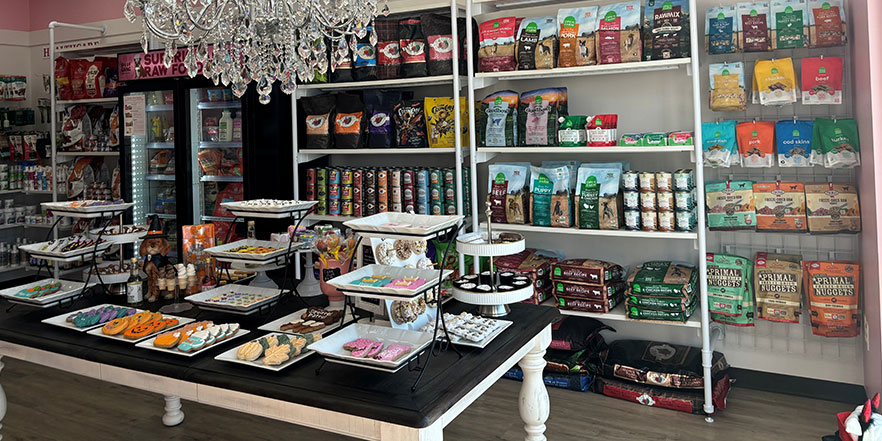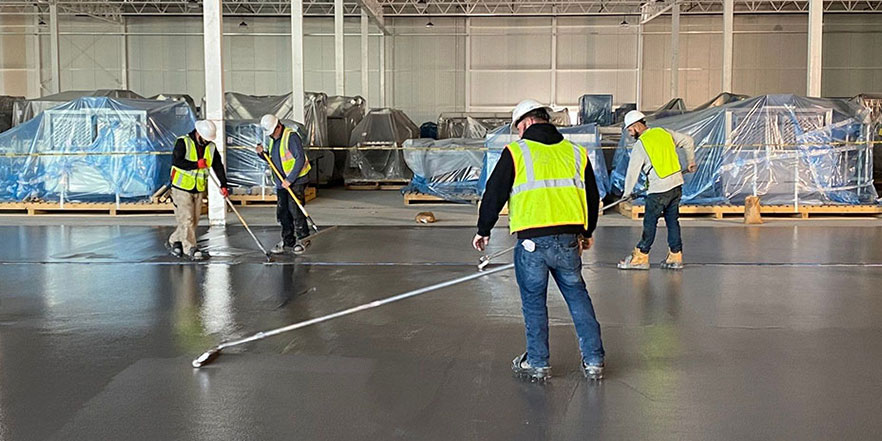The Secrets of How to Get a Loan to Buy a Business
Buying an existing business can be a smart shortcut to entrepreneurship – if you plan it right. In fact, U.S. mergers and acquisitions have surged by over 20% recently, returning to pre-pandemic levels. This reflects a “small business boom” where more entrepreneurs are choosing to buy a business rather than start from scratch. Acquiring a company means instant customers, cash flow, and infrastructure. However, it also requires significant upfront capital and careful planning. The purchase price of even a small business can be substantial, and you’ll need to budget for legal fees, due diligence costs, and working capital to keep operations running.
Most buyers can’t do it alone – they need a loan to buy a business. The U.S. Small Business Administration (SBA) facilitated over $56 billion in small business financing in fiscal year 2024, highlighting that funding is available if you know where to look. Yet, nearly 53% of small businesses seeking capital fall short of securing the funding required to meet their goals. The good news is that with the right approach and financing strategy, you can join the ranks of successful entrepreneurs who buy a small business and thrive. This guide will walk you through how to buy a business using an SBA loan or other financing. We’ll cover every step – from planning your purchase and finding the right business to buy, to lining up financing (including using an SBA loan to buy a business), all the way to closing the deal and even financing a partner buyout. By the end, you’ll understand how to get a loan to buy a business, navigate the buying process, and take confident action toward business ownership.
Contents
- Why Buy an Existing Small Business?
- Preparing to Buy a Small Business
- Finding the Right Business to Buy
- Evaluating the Business and Doing Due Diligence
- Negotiating the Purchase and Making an Offer
- Financing Options and How to Buy a Business
- SBA 7(a) Loan – The Go-To Loan to Buy a Business
- SBA 504 Loan – Financing for Heavy Assets in Business Acquisitions
- How to Buy a Business: Eligibility and Requirements for an SBA Loan
- How to Buy a Business: Getting an SBA Loan
- Closing the Deal and Post-Purchase Transition
- FAQ (Frequently Asked Questions)
Why Buy an Existing Small Business?
Buying an existing business is often less risky than starting a new venture from the ground up. When you buy a small business, you’re acquiring a company that already has customers, revenue, and an operational structure in place. This means you can benefit from immediate cash flow and a proven business model on day one. You also gain trained employees, existing vendor relationships, and a known brand in the market. These advantages often dramatically shorten the learning curve and ramp-up time compared to a startup business.
The first step in learning how to buy a small business is being aware of the obstacles you may face. An established business might come with a higher price tag, reflecting the sunk cost of goodwill and assets. You may also need to invest significant funds upfront, often far more than starting a small operation from scratch. You might find hidden issues such as – aging equipment, outstanding debts, or cultural and management changes as the previous owner exits. It’s crucial to understand these factors and potential expenses and challenges before you proceed with buying a business. However, if you buy a business that is well-matched to your skills and resources, the upside is immediate momentum. But without proper due diligence (which we’ll cover later), you could inherit problems. While buying a business can be a fast track to entrepreneurship, you should choose wisely and prepare thoroughly. Next, we’ll discuss how to get ready and plan for a successful purchase.

Related Articles
Preparing to Buy a Small Business
Before rushing to find a business to buy, take time to plan and be prepared. Successful acquisitions begin with careful planning.
- Assess Your Goals and Skills: Clarify what type of business fits your experience, interests, and lifestyle. Are you looking to learn how to buy a business in retail, services, manufacturing, or maybe a franchise? Be honest about your talents and what you enjoy doing. For example, if you thrive on creativity and independence, an independent small business might suit you better than a franchise with strict rules. Knowing your strengths will help narrow down the right business to pursue.
- Set a Budget and Get Your Finances in Order: Determine how much you can invest and what size loan you might need to buy a small business. Review your personal savings and assets – this will likely form the down payment or equity injection for a business loan. Most lenders (including SBA lenders) require buyers to contribute 10%–20% of the purchase price in cash. It’s also important to review your credit score; a score of 650 or above is usually needed for an SBA loan, while traditional lenders often have stricter credit standards. Paying down debts and fixing credit issues now can improve your financing options later.
- Prepare Documentation: Start assembling key documents that both sellers and lenders will want to see. This includes your personal financial statements, tax returns, resume or business experience summary, and even a draft business plan. A solid business plan with financial projections is crucial when seeking a loan to buy a business, as lenders will want to see how you plan to manage and grow the company. Preparing these materials early will save time once you’re in the heat of a deal.
- Build a Team of Advisors: Buying a small business is a complex transaction, so line up the help you’ll need. At minimum, consider engaging an attorney and an accountant with experience in business sales. An attorney can review purchase contracts, leases, and any legal obligations. An accountant can help you analyze the target company’s financial statements and assess the full costs of acquisition. You may also consult an SBA lender or SCORE mentor for preliminary advice. Having knowledgeable advisors from the start will make the process smoother and help you avoid costly mistakes.
Taking these preparation steps will put you in a strong position when opportunities arise. Knowing your criteria and being financially ready means you can move faster and more confidently when you find the right business to buy. Now, let’s look at how to identify that ideal opportunity.

Finding the Right Business to Buy
Finding the right business to buy is a critical part of the process. Start by defining clear acquisition criteria based on the preparation you’ve done. What size of business in terms of revenue or profit, are you targeting? What industries or locations interest you? Defining your ideal business profile helps narrow the search and makes it easier to spot strong opportunities.
Common methods potential buyers use to find businesses for sale include:
- Business Brokers: Brokers specialize in connecting buyers and sellers. They can present you with listings that match your criteria and help facilitate initial discussions. While brokers charge a commission (usually paid by the seller), they can often save you time and provide valuable guidance on how to buy a small business in their market.
- Online Marketplaces: Websites like BizBuySell, BizQuest or even the SBA’s own business listing site sometimes have postings of businesses for sale. You can filter by industry, location, and price to identify potential targets. Keep in mind that quality varies – some listings have detailed financials, while others are sparse. Use these as leads to inquire further.
- Networking and Direct Outreach: Let your professional network know you’re looking to buy a small business. Attorneys, accountants, or local business associations might know of owners planning to sell. Sometimes the best deals aren’t publicly advertised. If there’s a specific company you’re interested in, you can even approach the owner directly to ask if they’d consider selling.
- Franchise Opportunities: If you’re open to franchising, you can review the SBA Franchise Directory or franchise broker sites for resales of existing franchise units. Franchises come with brand recognition and support, though less control. Please note that the SBA has more rules for franchising, make sure any franchise you consider is SBA-approved, which can simplify financing.
As you search, keep your financing goals in mind. Having a general idea of the loan amount you can realistically qualify for will help you determine the price range of business you can afford to buy. For example, if you have $100,000 for a down payment, you might target businesses priced around $500,000 to $1 million. It’s wise to get a prequalification letter from an SBA lender or bank, when possible. This letter isn’t a full approval but can give sellers confidence that you’re a serious buyer with financing lined up.
Finally, when you do find a promising business, request initial information that includes at least the last 2-3 years of financial statements or tax returns and an overview of operations. Usually, you’ll need to sign a non-disclosure agreement first, as most sellers will want to protect confidential information. Once you have some financial details, you can move into the evaluation stage.

Business Valuations and Due Diligence
When you’ve identified a potential business to buy, the next step is due diligence to evaluate the company’s value and condition. This stage answers the critical question: is this business worth the price, and what am I really buying?
Business Valuation
Start by determining a fair valuation for the business. There are multiple methods to value a small business:
- Cash Flow Analysis Valuation Model: Look at the seller’s discretionary cash flow or EBITDA (earnings before interest, taxes, depreciation, and amortization). One common approach is the discounted cash flow method (DCF), which basically evaluates how much debt the business’s cash flow can support. Lenders will use this to decide how large of a loan to buy a business the company can repay from its profits. If the business’s cash flow can comfortably cover the loan payments (with some cushion), it’s a good sign.
- Comparable Sales Valuation Model: If you have access to data on recent sales of similar businesses, it can tell you what multiples of earnings or revenue are reasonable in that industry.
- Asset-Based Valuation Model: Evaluate the tangible assets like equipment, inventory and, real estate, as well as intangible assets like the brand and customer lists, etc. For asset-heavy companies like manufacturers, the balance sheet method focusing on tangible assets might set a floor value. For service businesses, the value is more about cash flow and goodwill.
Often, a combination of methods is used to triangulate a fair price. It can be very useful to bring in a professional business appraiser or your accountant to help value the company. In fact, for larger deals, SBA lenders may require an independent business valuation to confirm the price is justified.
Due Diligence
In addition to the company valuation, you’ll need to dig into all aspects of the business’s health. Due diligence typically includes:
- Financial Review: Examine detailed financial records for at least the past three years. Verify revenues, profit margins and expense trends. Check tax returns against financial statements for consistency. If the business is profitable, ensure those profits are backed by real, recurring revenue streams. Identify any liabilities like debts or pending tax issues you would assume.
- Operational Due Diligence: Understand how the business runs day-to-day. Review key customer contracts, supplier agreements, leases for premises or equipment, and employee situations. Determine if the business has any licenses or permits that will need to transfer. For example, ensure you can obtain or transfer all necessary licenses and permits to operate as you don’t want to buy a restaurant and then find out you can’t get the liquor license.
- Legal and Compliance: Have your attorney review any legal matters, such as ongoing litigation, compliance with regulations, intellectual property rights, etc. Also, check for any liens or UCC filings on the business assets that could affect the purchase. If the business deals with sensitive areas like environmental regulations and zoning laws, make sure there are no red flags or potential legal liabilities.
- Physical Assets: If real estate or equipment is included, most lenders will require an inspection as part of the loan approval process. For property, you might need an environmental assessment, especially for something like a gas station or manufacturing site. Inventory should be counted and assessed for salability. Machinery should be evaluated for condition and remaining useful life.
- Human Resources: Identify key employees and whether they will stay on. If the owner is critical to the company’s operation, plan for how you will handle their departure or retain them for a transition period. Sometimes, as part of the deal, the seller may agree to stay for a few months of training or consulting to ensure a smooth handoff.
Due diligence is where having an accountant and lawyer on your team pays off. They can help spot issues you might miss. You’re essentially trying to verify everything the seller has presented and uncover any hidden problems or misrepresentations. It’s normal to find a few minor issues but what you don’t want is a major surprise like misstated financials or legal liabilities.
Using a checklist designed for due diligence when purchasing a business can help you identify areas to review that you may not have thought of. There are many sample checklists available and your advisors likely have one. A thorough, objective investigation will give you confidence to proceed – or a signal to walk away if the risks outweigh the benefits.
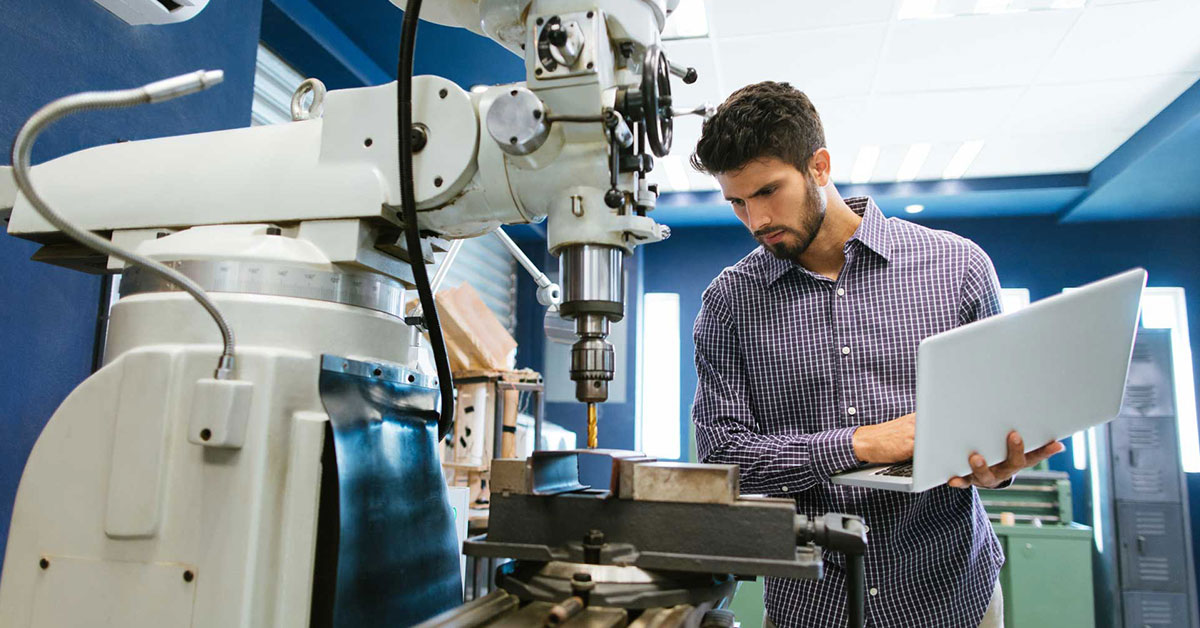
Negotiating the Purchase and Making an Offer
Once you’ve done the initial due diligence and still like what you see, it’s time to negotiate terms and formally agree on a deal to buy the business. This typically involves a series of steps and documents:
Letter of Intent (LOI): In many cases, the first formal document is a non-binding Letter of Intent. The LOI outlines the key terms you propose including the purchase price, included assets, any seller financing, timeline, and important contingencies. An LOI is not the final contract, but it serves as a handshake that buyer and seller are in general agreement on a deal framework. It also usually includes a no-shop clause preventing the seller from soliciting other offers for a short period while you finalize due diligence and financing.
Negotiating Price and Terms: Be prepared to negotiate with the seller on price and deal structure. If your due diligence uncovered any weaknesses (for example, the business is a bit more risky or needs investment), you might negotiate the price down or ask the seller to provide seller financing for part of the price. Seller financing means the seller lets you pay a portion of the price over time, effectively acting as a lender. This is common in small business sales and can be a win-win situation as it reduces the cash you need upfront and shows the seller’s confidence in the business continuing to perform. For instance, a deal could be structured as 70% bank/SBA loan, 20% seller financing, and 10% your down payment.
Besides price, negotiate what’s included in the sale. Will the seller stay on for a training period? Are accounts receivable included or will the seller keep those? How will inventory be valued at closing? Having clarity on these details prevents misunderstandings later. If it’s a partner buyout situation where you are buying out a co-owner, negotiation will center on valuing that ownership stake and terms of payment.
Purchase Agreement: After hashing out terms, everything gets formalized in a business purchase agreement, also called an acquisition agreement or sales contract. This is a binding contract that spells out all aspects of the deal including the purchase price, payment terms, representations and warranties, closing date, and so on. Your attorney should review or draft this document. Typical components also include a bill of sale for transferring ownership of assets and possibly consulting or non-compete agreements. Most buyers will require the seller to sign a non-compete agreement outlining both a duration of time and location boundaries preventing the seller from opening a competing business down the street after you buy their business.
Make sure the purchase agreement addresses any adjustments at closing. If the sale includes working capital targets like a certain amount of inventory or cash on hand, the price may be adjusted based on the actual amounts at closing. Also decide how to handle any closing costs, broker fees, or transfer fees. Usually each party pays their own professional fees and legal bills – and any transfer taxes are split.
Financing Contingency: Importantly, if you are relying on a loan to buy the business, your offer or purchase agreement should be contingent on you securing that financing. This gives you an “out” if your financing falls through. Most sellers understand that without a loan the deal can’t happen, so having a financing contingency is standard. The agreement may give you a certain number of days to get loan approval, after which the contingency expires.
Throughout negotiations, maintain a collaborative tone. Buying a small business is not like a hostile corporate takeover as you often need the seller’s cooperation through closing and even afterwards. A bit of goodwill can go a long way. By the end of this stage, you should have a signed LOI or purchase agreement that sets the stage for closing, pending your financing. Now it’s time to line up the money to make it happen.
Financing Options and How to Buy a Business
Unless you’re paying 100% in cash, you’ll need to secure financing to buy a business. Fortunately, there are several financing options to help you acquire a company. Most deals involve a combination of sources. Here are the common ways to get the money to buy a small business:
- SBA Loans: The Small Business Administration offers some of the best loans to buy a business. SBA loans are provided by banks or non-bank lenders and are guaranteed up to a certain percentage by the government, which reduces risk for lenders. The flagship 7(a) loan program is extremely popular for business acquisitions due to its favorable terms (more on this in the next section). SBA loans typically allow lower down payments and longer repayment periods than many conventional loans options. For many entrepreneurs, an SBA loan to buy a small business is the key to making a purchase affordable.
- Traditional Bank Loans: You can seek a standard commercial loan from a bank, outside of the SBA programs. These may be an option if you have very strong credit, ample collateral, and the business has solid financials. However, conventional bank loans often require larger down payments of 20-30% or more, and shorter terms which means higher monthly payments. Banks also tend to be more conservative – they might shy away from financing a business purchase unless you have exceptional credentials or relationship with the bank. In comparison, SBA-backed loans open the door for many who wouldn’t qualify for a conventional loan to buy a business.
- Seller Financing: As mentioned earlier, seller financing is when the seller agrees to finance part of the purchase price, allowing you to pay them back over time (typically with interest, over a few years). This is a common component of small business deals. For example, on a $500,000 purchase, a seller might finance $100,000 of it, meaning you pay them that portion in installments after closing. Seller financing reduces the amount you need to borrow from a bank and shows the seller’s confidence in the business’s future (since they only get fully paid if the business does well under your ownership). Sellers may charge a competitive interest rate, but often the terms are more flexible than a bank. From a lender’s perspective, seller financing can count toward your equity injection if structured correctly – the SBA often requires the seller note to be on standby for the duration of the SBA loan to count as equity injection. In practice, many SBA deals do include some seller financing.
- Personal Funds and Investment: Any cash you contribute is part of the financing. Beyond your own savings, some buyers tap into home equity through a HELOC or home equity loan, or use personal loans to raise funds. Another route is bringing in an investor or business partner who provides capital in exchange for ownership equity. Keep in mind, if you bring in outside investors, the SBA may consider them owners of the business which could affect loan eligibility or require them to be guarantors if they own 20% or more. If you’d rather not take on debt, you could also consider a partner buy-in instead of a buyout. This is where a new partner invests cash for a share of the business, giving the selling owner a partial exit.
- Retirement Funds (ROBS): A more specialized option is a Rollover for Business Startups (ROBS) arrangement, which lets you use your 401(k) or IRA funds to buy a business without immediate tax penalties. This is a more complex strategy requiring professional setup, and it’s not a loan. While it can provide funding, you risk your nest egg, so approach with caution and good advice.
Most buyers end up using a combination of these options. As an example, you might use an SBA 7(a) loan for the bulk of the price, invest some of your own cash and have the seller carry a note for the remainder. That blend can make the deal work while keeping your monthly payments manageable.
Start conversations with lenders early, even before you have a target business. You can discuss informally the amount of loan you might qualify for and what criteria the lender will look for. This will help set your expectations and speed up the loan process later.

The SBA 7(a) Loan – The Go-To Loan to Buy a Business
The SBA 7(a) loan is the SBA’s primary and most flexible loan program, and it’s widely used as a “buy a business” loan for small business acquisitions. If learning how to buy a business with a government loan, there’s a good chance the 7(a) will be your top choice.
- High Loan Amounts: The SBA 7(a) can lend up to $5 million for general business purposes. This cap is usually plenty, since most small business purchases fall under this amount. Whether you’re buying a $200,000 laundromat or a $2 million manufacturing company, the 7(a) could cover it.
- Broad Use of Funds: A 7(a) loan to buy an existing business can cover not only the purchase price but also many other associated costs. Proceeds can be used for real estate, equipment, furniture, working capital, inventory, and even closing costs. Essentially, almost any expense related to acquiring and operating the business is eligible. This flexibility is crucial – for example, you might need extra funds for a remodel or marketing after the purchase, and a 7(a) loan can include that.
- Lower Down Payment: One big advantage of SBA 7(a) loans is the relatively low down payment required. Typically, you need to invest about 10% of the total project cost as equity. Compare this to conventional loans that might ask 20-30%. On a $500,000 deal, 10% means you put $50k down and the 7(a) loan covers the rest, assuming no seller financing. In some cases, the required equity can be a combination of buyer’s cash and seller financing. For instance, the SBA might allow you to put 5% cash down if the seller carries 5% on standby as a second lien – meeting the 10% total injection. Recent SBA rule changes have given lenders more flexibility on this equity structure, but at least 10% equity is the general rule. This lower down payment threshold makes buying a business achievable for more entrepreneurs. Connecting with an SBA lender early on can help you figure out how much equity you might need to put in and whether alternative equity options might work for you.
- Long Repayment Terms: The 7(a) loan offers extended repayment terms, which keep monthly payments lower. For a business acquisition, the term is typically up to 10 years. If real estate is part of the purchase, you could get up to a 25-year term on that portion. A 10-year term for the majority of the loan amount is often longer than many traditional bank loan offerings which are often 5-7 years, meaning your loan payments are stretched out and easier to handle from the business’s cash flow. There is no penalty for prepayment on SBA loans under 15 years, so you can always pay it off early if the business does well.
- Competitive Interest Rates: SBA 7(a) loans have interest rates that are generally lower than many alternative financing options. Most 7(a) loans are variable rate, tied to the Prime rate plus a margin, with cap rates set by the SBA. While not “cheap” interest, it’s usually far better than online business loans, credit cards or personal loans. And because the SBA guarantees a portion of the loan (usually 75-85% of the loan amount), lenders are willing to offer reasonable rates to qualified buyers.
- Easier Qualification: The SBA guarantee reduces risk for lenders, so they can lend to borrowers who might not meet ordinary bank criteria. Many borrowers who would not otherwise qualify for a conventional small business loan find that they qualify for the SBA 7(a) program. This doesn’t mean SBA loans are easy to get – you must still have decent credit, some management experience, and a viable business – but the backing from the SBA helps lenders get comfortable with the loan requests. Lenders are more forgiving on things like slightly lower credit scores or limited collateral because of the SBA guarantee. Essentially, the SBA is helping “open the door” to financing for more entrepreneurs.
To use a 7(a) loan to buy a small business, the business itself must be eligible under SBA rules. It must be a for-profit small business located in the U.S., and it must meet SBA size standards such as it must be under 500 employees for most industries, or under a certain revenue threshold. Almost any typical small business you’d buy – whether a local restaurant, a retail shop, or a manufacturing firm – will meet the size criteria. Ineligible businesses include things like speculative investments, lending businesses and businesses involved in illegal activities. But these are edge cases and the vast majority of main-street businesses are fine.
As the buyer, you must be a U.S. citizen or lawful permanent resident, and you cannot be delinquent on any federal debts (like taxes or student loans). The SBA also requires that the buyer will actively manage the business – so if your plan was to buy a small business and run it absentee, an SBA loan might not be approved. They want owner-operators, not pure investors.
We’ll cover detailed qualifications later, but generally for a 7(a) loan you should have a credit score of 680+, a solid business plan, and enough income to comfortably cover the loan payments. The 7(a) loan can truly be a game-changer and is often dubbed the “SBA buy a business loan” because of how ideally suited it is for acquisitions. Many successful entrepreneurs have used 7(a) financing to purchase a company and significantly grow it with the help of that initial funding.
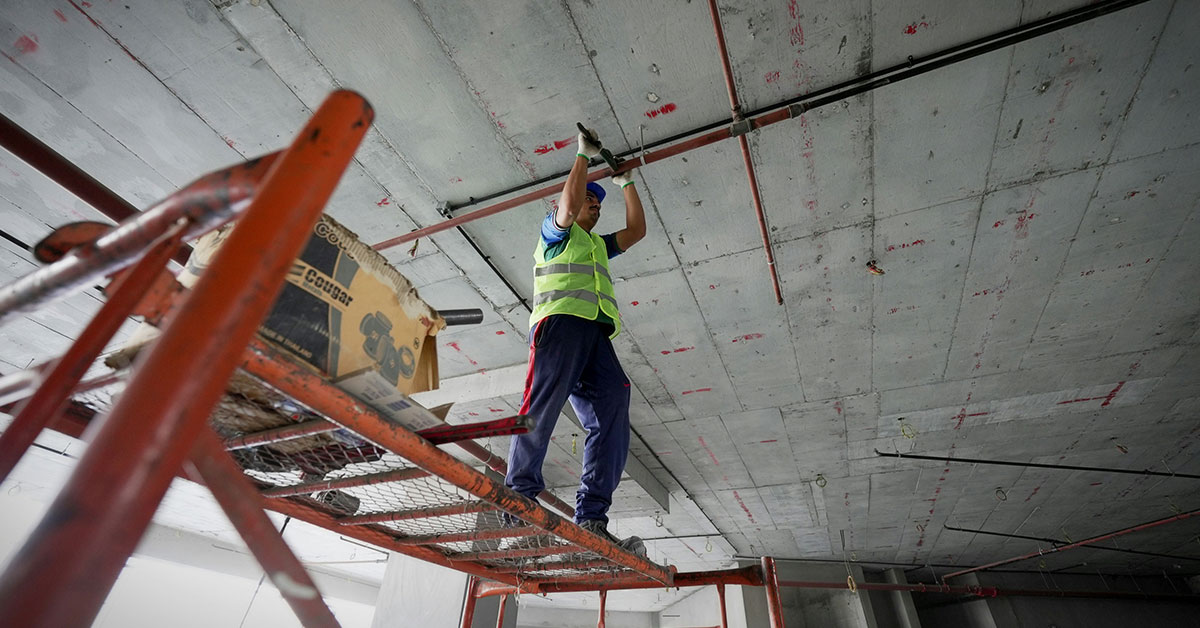
SBA 504 Loan – Financing for Large Fixed Assets in Business Acquisitions
Another SBA loan option to consider when you are learning how to buy a business, is the SBA 504 loan. The 504 loan is a bit different in structure and purpose than the 7(a). It is primarily designed for financing major fixed assets – namely commercial real estate or large equipment, that promote business growth and job creation. If the business you want to buy includes significant real estate or expensive equipment, an SBA 504 loan could be an excellent financing tool. Here’s how it works:
- Structure of 504: An SBA 504 loan is actually a partnership between three parties: you (the borrower), a bank or private lender, and a Certified Development Company (CDC) which is a nonprofit entity promoting economic development. A typical 504 project is financed 50% by the bank, 40% by the CDC, and 10% by the borrower’s down payment. For example, to finance a $1 million business facility purchase, a bank might lend $500k as the first mortgage, the CDC lends $400k as a second lien backed by SBA, and you put in $100k. The CDC portion is the actual SBA-guaranteed loan and comes with a fixed interest rate. The bank portion can be conventional terms (fixed or variable). This structure often yields very favorable terms because the risk is spread out.
- Loan Amounts: The bank portion can be pretty large as 504 loans can be well over $10 million, and the CDC portion can go up to $5.5 million. This means total project financing can be $12–15 million or more when combined with the bank piece, far exceeding the 7(a) cap. Keep in mind the 504 is only for asset acquisition. You can’t use 504 funds for working capital, inventory or many soft costs. It’s strictly geared for fixed assets.
- Use Cases: You would consider a 504 loan to buy a small business in scenarios like these:
- The business includes real estate that you want to purchase as part of the deal – like you’re buying a manufacturing company and the sale includes the factory building and land.
- The business requires a lot of heavy equipment or machinery, and you need financing to purchase those assets as part of modernizing or expanding the business.
- You are buying a business and plan a significant expansion or renovation of its facilities as part of your growth strategy.
If the deal is mostly goodwill, the 504 loan won’t cover that. For example, if you’re buying a consulting firm that has no real estate and minimal equipment, a 504 is not applicable and you’d use a 7(a) loan. But if you’re buying a manufacturing plant, a hotel, or other commercial real estate or asset-heavy enterprise, the 504 loan can be ideal.
- Down Payment: The 504 loan also typically requires a 10% down payment from the borrower, though in some cases it could be 15% or more if it’s a special-purpose property or a new business. The advantage is that you’re getting 90% financing which is very high leverage for commercial real estate. Whereas traditional bank loans typically max out at 70-80% financing for commercial property. The SBA 504 program enables 90% financing, which is a huge benefit for business owners who want to own their property.
- Interest Rates and Terms: One of the best features of the 504 loan is the long-term, fixed interest rates on the CDC portion. The CDC/SBA portion is typically a 20- or 25-year fixed rate for real estate or 10-year fixed for equipment. The bank portion might have a 20-25 year amortization with a balloon or adjustable after 5-10 years, but that depends on the bank. Overall with a 504 loan, you can secure low, fixed rates on a large chunk of the financing. This provides stability in your payments. Many refer to 504 as having “mortgage-like” terms for businesses because of that long fixed rate.
- SBA 504 vs 7(a) for Buying a Business: If you need to finance long-term fixed assets, 504 often beats 7(a) in cost because of the lower fixed interest rates. Also, 504 loans don’t have the SBA guaranty fee that 7(a) loans have in that the (7(a) loans charge a one-time guaranty fee of 2-3.5% of the guaranteed portion. With 504 loans, the fees are different and generally lower percentage-wise for larger loans. Please note that the 504 loans cannot be used for working capital, goodwill or inventory. Often, a business acquisition involves a lot of goodwill beyond the tangible assets. You cannot finance goodwill with a 504 loan. In those cases, a 7(a) is usually the solution. Sometimes lenders will do a combo 7(a) and 504. For example, they might use a 504 to finance the real estate part of the purchase, and a 7(a) to finance the goodwill and working capital part. This can be complex, but it’s one way to leverage the strengths of both programs.
Overall, consider an SBA 504 loan if the deal has substantial real estate or equipment needs. It’s a powerful loan to buy a business when physical assets are a big part of the transaction. For pure business purchases without real estate, stick to the 7(a). And remember, both programs allow you to buy an existing business – whether it’s an independent company or a franchise – as long as the use of funds fits the guidelines.

How to Buy a Business: Eligibility and Requirements for an SBA Loan
While SBA loans are very attractive, you do need to meet certain eligibility criteria and requirements to qualify. Both you as the borrower and the business you’re buying must pass the tests. Here’s what lenders and the SBA typically look for when you apply for an SBA loan to buy a business:
Personal Credit and Financial History
Your personal credit score is an important factor. Generally, a credit score of 680 or higher is recommended for SBA 7(a) loans. They will examine your credit report for any major issues like bankruptcies, late payments or defaults. It’s not only the score and your overall creditworthiness that matter. For instance, if you have a past bankruptcy, you might need to wait a certain number of years and demonstrate re-established good credit before being eligible. Also, you must not be delinquent on any federal debt like student loans, taxes, etc. Prepare a personal financial statement showing your assets, liabilities, and liquidity. Lenders like to see that you’ll have some post-closing liquidity with money left over for working capital or emergency and that not every penny is tied up in the down payment.
Down Payment (Equity Injection)
Most SBA loans to buy a small business require the buyer to put in at least 10% of the total project cost in cash, or a combination of cash and seller financing. You’ll need to verify you have these funds available. Lenders may ask for recent bank statements or investment account statements to prove you have the cash for the down payment and any closing costs. If some of the down payment is coming as a gift or from investors, that needs to be documented properly and those parties may need to be part of the loan. The more you can put down, the stronger your application looks, but don’t stretch to the point of leaving yourself with no working capital. SBA loans already favor lower down payments, so 10-20% is usually fine. Just be prepared to inject what is required as the lack of sufficient equity injection is a common reason SBA loan applications falter.
Business Financials and Cash Flow
The business you are buying must demonstrate enough cash flow to repay the loan comfortably. SBA lenders typically use a metric called debt service coverage ratio (DSCR). Lenders want to see that the business’s projected cash flow after your ownership will cover the loan payment by at least 1.15 to 1.25 times or more. In practice, they’ll look at the historical financials of the business like tax returns and profit & loss statements, to judge its earnings. They may also factor in your plans to improve or expand the business, but historical cash flow is key. This is why buying an established, profitable business makes financing easier. If a business barely breaks even or is losing money, getting an SBA loan to buy it becomes challenging.
Expect to provide 3 years of the business’s financial statements and tax returns to the lender, plus an interim financial statement if the year is in progress. You’ll also want to create a forecast for the next 1-2 years, showing income, expenses, your salary, and any financial shifts you expect under your ownership. The projection should illustrate that you can pay all operating expenses and service the new loan. Lenders will scrutinize these projections, so base them in reality with your accountant’s help.
Business Plan and Experience
Learning how to buy a business with an SBA loan isn’t just about crunching numbers – lenders also consider your management experience and your plan for the business. A strong business plan is often required, especially if the business isn’t a franchise or if you’re new to the industry. Your business plan should include: an overview of the business and market, your strategy for operations and growth and detailed financial projections. It’s also wise to address the transition, and how you will handle the change of ownership, retain key employees/customers, etc.
Along with the plan, your resume or background will be evaluated. SBA lenders prefer when the buyer has some relevant industry or management experience that will help them run the acquired business successfully. You don’t need to have run a business exactly like it before, but you should highlight transferable skills. For example, if you’re buying a manufacturing company and you have a background in engineering and project management, that’s a plus. Or if you’re buying a restaurant and you’ve managed a retail store, you can emphasize your experience in customer service and operations. Lenders want to be comfortable that you can execute the plan and not drive the business into the ground, which would jeopardize loan repayment.
Collateral
SBA 7(a) loans are generally “secured” loans, meaning the lender will take collateral when available – but they will not decline a loan solely due to lack of collateral if the loan application is otherwise strong. For a business acquisition, typical collateral might include business assets like equipment and inventory, along with a lien on your personal assets such as a second mortgage on your home if you have significant home equity. Whereas an SBA 504 loan uses the commercial real estate and the financed equipment, if any, as collateral and does not seek other collateral to secure the loan.
The SBA requires lenders to collateralize any loan to the maximum extent possible up to the loan amount. However, if the assets in the deal are not enough to fully secure the loan which is common when a lot of the purchase price is goodwill, they will typically secure what is available. Be aware that if you own personal assets with equity like real estate, cars, or even a recreational vehicle—you may be asked to pledge them as collateral. It’s a personal decision, but many entrepreneurs accept this as part of the process when securing financing. Just keep in mind: collateral isn’t what gets you approved. Lenders care far more about the business’s ability to repay the loan through cash flow. Their goal is to fund loans that perform—not to recover losses by liquidating personal assets.
Personal Guarantee
With few exceptions, SBA loans require a personal guarantee from the owners of the borrowing entity. This means you personally pledge to repay the loan if the business cannot. Even if you form an LLC or corporation to buy the business which you likely will for legal protection, you as the principal will sign a guarantee. This is standard and it essentially makes you backup the loan with your personal net worth. In short, you’re all-in on this venture. If you have a spouse, in community property states they might require your spouse to sign a form acknowledging the debt as well. Guarantees are one way the SBA and lenders ensure that borrowers have “skin in the game.”
Other SBA Requirements
- The seller of the business generally cannot remain as an owner if you’re using an SBA loan to buy them out completely. The SBA loan can be used for a complete change of ownership or a partner buyout, but the point is to facilitate ownership changes, not to fund passive investors. The seller can stay on as an employee or consultant for transition, but not retain ownership – otherwise the deal might be considered refinancing an affiliate which SBA rules restrict.
- If the transaction includes intangible assets like goodwill over a certain amount, the SBA may require an independent business valuation from a qualified source. This is to ensure the loan is not financing an inflated value. Lenders will guide you if this is needed.
- Life insurance on the buyer may be required for some loans, naming the lender as beneficiary. This is common if the business is heavily dependent on the owner’s involvement. It ensures the loan would be repaid in case of the borrower’s death. So be ready to potentially get a term life insurance policy as a condition of the loan.
Overall, meeting the requirements for an SBA loan comes down to demonstrating that you and the business are a good, creditworthy risk. The SBA doesn’t want you to default – and neither does the lender – so they will carefully evaluate these criteria. It might feel like a lot of paperwork and effort, but remember that you’re getting a favorable loan that can make your dream of owning a business possible. Many buyers successfully navigate this process every year – and with preparation, you can too. Next, we’ll go through the process of applying and getting an SBA loan approval once you’re ready to move forward.

How to Buy a Business: Getting an SBA Loan
Now that you’ve found a business, negotiated a deal and ensured you meet the qualifications, it’s time to actually secure the loan. The process of getting an SBA loan to buy a business involves several steps and can take anywhere from several weeks to a few months from start to finish. Here’s a step-by-step breakdown of how to get a loan to buy a business through the SBA 7(a) program, which is a more common loan for acquisitions.
Step 1: Choose the Right SBA Loan Program – Decide which loan program fits your needs. As we discussed, for most business acquisitions the SBA 7(a) loan is the go-to choice due to its flexibility. If your deal involves a lot of real estate or equipment, you might consider an SBA 504 loan or a combination of both loan options. Assuming you want the standard 7(a), proceed with that in mind.
Step 2: Find an SBA Lender – Not every bank or credit union actively lends under SBA programs, so you’ll want to find a lender experienced in SBA business acquisition loans. The SBA’s Lender Match tool can help connect you with SBA-approved lenders. You can also ask for recommendations from your local SBA office or SCORE chapter. Many SBA Preferred Lenders (PLP) have the authority to approve loans in-house, which can speed up processing. When you approach a lender, treat it like a mini-interview. Briefly pitch the deal (type of business, price, how much loan you need, your background) and see if it’s something they would finance. Community banks, certain national banks and specialized SBA lending companies are all options. First Bank of the Lake, for example, is an SBA Preferred Lender that has funded over $1.1 billion in SBA loans from 2020 to 2024, and has experience guiding entrepreneurs through acquisitions. You want a lender who is enthusiastic and knowledgeable, as they will be your partner through closing.
Step 3: Complete the Loan Application and Provide Documentation – Once you select a lender and formally apply, be ready to submit a comprehensive application package. An SBA loan application for buying a business typically includes:
- SBA Loan Application Forms: You’ll fill out the Borrower Information Form (SBA Form 1919) and the lender will fill out SBA Form 1920. These forms cover basic information about you, your business, and the loan request.
- Personal Financial Statement: The SBA Form 413 is commonly used and it lists your personal assets, liabilities, income, and expenses.
- Business Financials: Provide the historical financial statements and tax returns of the business being acquired and it’s usually for 3 years. Also include interim financials like the year-to-date balance sheet and profit/loss statements.
- Projected Financials: A projection of income, expenses and cash flow for at least 1-2 years after the acquisition. Include a narrative explaining the assumptions.
- Business Plan: Especially if you’re a new owner, the lender will want a business plan or at least a summary of your strategy for running the business. Emphasize how you will maintain and grow its success.
- Purchase Agreement: A copy of the signed letter of intent or purchase agreement for the business. This shows the lender the terms of the deal, the price, what’s being acquired, etc. The lender will often base the loan amount on the purchase price and associated costs outlined here.
- Valuation/Appraisal: The lender might request an independent business valuation. Sometimes they order this from a third-party once your application is in process. If real estate is involved, a real estate appraisal will be required.
- Personal Documents: Copies of your ID, your resume, proof of citizenship/residency, any relevant licenses or certifications.
- Other forms: The lender will have various forms for you to sign regarding credit authorization, possible franchise certification, acknowledgement of SBA rules, etc. Be prepared to send many other documents.
This part can feel overwhelming with paperwork. Stay organized and responsive. Provide complete and accurate information – missing documents or incomplete forms are a common cause of delays. It’s often helpful to create a checklist and keep digital copies of everything you submit.
Step 4: Lender Review and Credit Decision – With your application submitted, the lender’s underwriting team reviews all the information. They will analyze the financials to ensure the business can support the loan debt service, check your credit and background and evaluate the overall risk. They may come back with questions or requests for additional info like a clarification on a dip in sales last year or an updated AR/AP report. This back-and-forth is normal. Try to reply promptly and thoroughly to any inquiries. The lender’s goal is to build a credit memo that justifies the loan and then if they are a Preferred Lender, approve it internally or send it to SBA for final approval.
Once the lender is satisfied, they can issue a loan commitment and then just notify the SBA for a loan number. If the lender needs SBA’s sign-off, they will submit the package to the SBA underwriting center. The SBA’s turnaround on 7(a) loans can be as quick as 5-10 business days for smaller loans, while larger loans often take longer to approve. Overall, expect this review/approval stage to take a few weeks. It could be faster or slower depending on the complexity of the deal and how busy the lender/SBA are. Please note that It’s not unusual for the entire loan process to take 45-60 days or more, so be patient but proactive.
During this time, an SBA guarantee fee will be calculated. For 7(a) loans, the guarantee fee ranges from 2% to 3.5% of the guaranteed portion of the loan. As an example, on a $1 million loan with 75% guarantee, the fee on $750k might be around 2-3%, roughly $15k-$26k. This fee is usually financed into the loan amount, so you don’t pay it out of pocket. There will also be some closing costs like appraisal fees, filing fees, etc., and the lender will provide a breakdown. You will receive a loan commitment letter or term sheet upon approval. Review it carefully. It will outline the loan amount, interest rate. An example would be: “Wall Street Journal Prime + 2.75% adjustable quarterly”, term of 10 years, the monthly payment and any other conditions to close. If anything is unexpected, discuss with the lender. Assuming all looks good, you’ll sign to accept the commitment.
Step 5: Closing the Loan – Closing an SBA loan for a business acquisition is much like a mini real estate closing, with a lot of documents to sign. The lender and possibly an attorney or closing agent, will coordinate the closing date, often set to coincide with the business purchase closing itself. Before closing, you must satisfy any conditions from the commitment. For example:
- If required, secure a life insurance policy and collaterally assign it to the lender.
- If using a seller note, the seller will need to sign an agreement to subordinate their note to the bank and possibly defer payments as required.
- Ensure your business is set up and you have any business licenses ready that are needed on day one.
- You may need to open a business bank account with the lender for the new entity.
- Provide updated financials if a long time has passed.
- Arrange for any down payment funds you’re paying to be available. Often you’ll bring a cashier’s check or wire your portion to an escrow account at closing.
At the closing, you’ll sign the final loan agreement, business loan agreements, promissory note, security agreements for liens on business assets, personal guarantee forms and various SBA forms and disclosures. The seller will sign their closing documents to transfer the business ownership to you. It’s a bit of a dance in that the lender wants the business sale documents signed to ensure the change of ownership is effective, and the seller wants assurance the loan funds will be disbursed.
Typically, an escrow agent or attorney handles the flow of funds. Once all documents are executed, the loan funds are disbursed. The lender will wire the purchase price minus any down payment you’re paying directly, to the seller’s account or escrow. Your down payment funds usually also get delivered to the seller through escrow. Any broker fees or other payoffs are handled per the agreement.
Once closing is done, you officially own the business and you have the SBA loan to help finance it! Remember that an SBA loan often comes with monthly payments starting about a month from closing, so make sure the business’s cash flow is prepared to cover that. Also, many SBA lenders will set up an automated payment from your business account for convenience.
The entire process of getting an SBA loan to buy a small business can take 1-3 months on average. Some deals close faster especially if the buyer and seller have everything ready and the lender is experienced and quick. Some take longer due to complications or delays in getting info. By staying organized and working with an experienced lender like First Bank of the Lake, you can navigate the process as efficiently as possible. Once it’s done, you’ll have achieved what many entrepreneurs strive for – owning a business with smart financing.
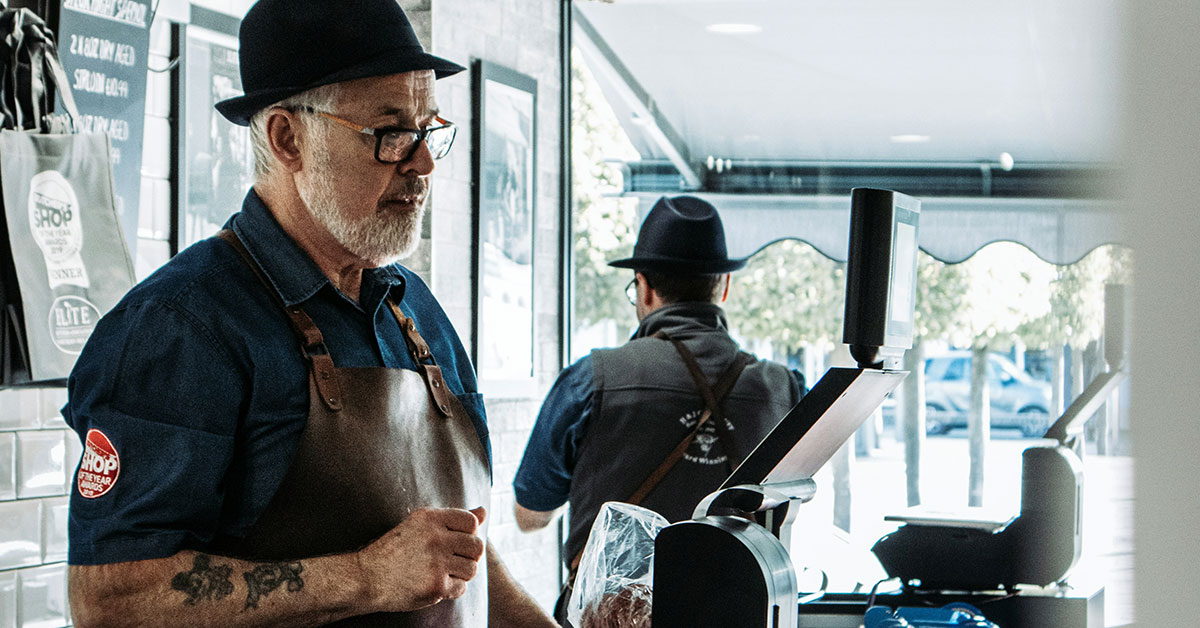
Closing the Deal and Post-Purchase Transition
The purchase is financed and papers are signed – but your work isn’t over. The closing of the deal is a milestone, but now you must ensure a smooth transition as the new owner. Here’s what to focus on as you finalize the purchase and immediately afterward. At closing, make sure all necessary legal documents are properly executed:
- Bill of Sale: Confirms the transfer of ownership of the business assets or stock, if it was a stock sale.
- Assignment of Contracts or Leases: If the business has a lease, ensure the landlord has approved the assignment or you have a new lease in your name. Transfer equipment leases, supplier contracts, or client contracts as needed. Some contracts might require landlord, customer, or vendor consent to transfer – ideally this was arranged prior to closing.
- Licenses and Permits: Submit applications to transfer or obtain any required licenses. If you bought a restaurant, you may need to get a food service permit and liquor license reissued in your name. Often, regulatory approvals might be a condition that had to be cleared before funding. Double-check that these critical operational licenses are in place as you take over.
- Entity and Tax Registrations: If you formed a new entity to buy the business, ensure you register for state and local tax accounts (sales tax, payroll tax) effective as of closing. Get a new EIN from the IRS for your entity if not already obtained. Also, update the business name on utility accounts, insurance policies, and any subscriptions or agreements.
Transition with the Seller: In many small business purchases, the seller agrees to assist for a transition period. They might stay on for a few weeks or months as a consultant or employee to train you in operations, introduce you to key customers and show you the ropes. This can be invaluable for retaining customer confidence and learning the nuances of the business. Make sure you have a clear agreement about the extent of the seller’s involvement post-sale like how many hours per week, for how long, and whether they are paid separately or it was included in the purchase price. Some SBA loans allow a seller transition services agreement where the seller can be paid a reasonable consultancy fee for up to 12 months – check with your lender if that’s applicable and if it was accounted for.
Communications and Announcement: Plan how to announce the ownership change to employees, customers, and suppliers.
- Employees: If the business has employees, meet with them as soon as the deal is done – often on closing day or the next morning. Reassure them about the transition. Introduce yourself, express enthusiasm, and outline any immediate changes. Retaining good employees is crucial for continuity.
- Customers: For key customers, a personal introduction is best. A joint announcement letter from the seller and you to all customers works well, thanking them for their loyalty and introducing you as the new owner committed to their satisfaction. Highlight that the business will continue to deliver the same quality service or product. If the seller was the face of the business, consider having them personally introduce you to top clients if possible.
- Suppliers and Creditors: Notify suppliers about the change in ownership and arrange to transfer or re-establish trade credit accounts in your business’s name. Some suppliers may require you to fill out new credit applications. Also inform your bank, merchant services for credit card processing and any other financial partners that you are now the authorized owner.
Working Capital Management: Right after buying a business, cash flow is critical. You likely have a loan payment starting soon and possibly some integration costs. Monitor the business’s finances closely in the first few months and make sure you have sufficient working capital on hand. If your loan includes working capital funds, use them prudently. Collect receivables promptly and keep an eye on expenses. It’s wise to build a cash reserve from the business if possible, to cushion any unforeseen issues. Remember that buying a business often involves a tight balance of finances – you might have used a lot of cash for the down payment, so the early phase of ownership is not the time for unnecessary big expenditures until you see steady cash flow.
Implement Quick Wins, but Avoid Disruptions: As a new owner, you’ll have ideas and improvements you want to implement. However, temper any big changes in the very beginning. In the first few weeks and months, focus on learning and maintaining stability. Observe how things operate under real conditions of ownership. Talk to employees to gather their insights. Gradually make improvements once you have a handle on the operations. For example, you may want to extend store hours by an hour, or update an outdated computer system that can signal positive momentum without alienating anyone.
Administration and Compliance: After closing, there are a few housekeeping tasks:
- Insurance: Ensure all insurance policies like general liability, property, workers’ comp, etc. are in your name or new policies are made effective at closing. Many policies cannot be assumed and require new coverage. Lack of proper insurance can breach your loan agreement and lead to force-placed insurance by the lender.
- Accounting System: Set up your bookkeeping. If the seller used software like QuickBooks, get a copy of the data or ideally take over the account. Start fresh records from closing forward, but retain historical financials for reference.
- SBA Loan Compliance: Be aware of any covenants from your lender. For some SBA lenders, they may require periodic financial statements, have restrictions on additional debt without permission or liquidating assets used as collateral. They may also request updated insurance certificates annually, etc. Stay in communication with your lender and provide any required reports on time. This will keep your relationship positive throughout the life of the loan.

FAQ (Frequently Asked Questions)
Q: How much of a down payment do I need to buy a business?
A: Typically, you should expect to put in about 10% of the purchase price as a down payment when using a business acquisition loan. Some lenders or situations may require up to 20%. The SBA 7(a) loan program usually asks for at least 10% equity from the buyer, which can sometimes include seller financing on full standby. Conventional or non-SBA loans often demand a higher down payment (20-30%). Plan on a minimum of 10% cash investment to buy a business, though the more you contribute, the less you need to borrow.
Q: How long does it take to get an SBA loan to buy a business?
A: It generally takes anywhere from 30 to 90 days to get an SBA 7(a) loan approved and funded for a business purchase. The timeline can vary based on the lender and the complexity of the deal. Simpler deals with prompt documentation could close in around 4-6 weeks. More complex transactions (or delays in third-party reports, like an appraisal) can stretch to 3 months or more. Working with an SBA Preferred Lender (who can approve in-house) and being quick to provide documents can speed things up. It’s wise to start the loan application process as early as possible once you have a signed letter of intent or purchase agreement.
Q: Can I use an SBA loan to buy out a partner in my business?
A: Yes. The SBA 7(a) loan can be used to buy out a business partner. The SBA considers partner buyouts as an eligible use of proceeds. You would essentially refinance the business under yourself by borrowing funds to purchase your partner’s shares. The 7(a) loan’s terms (up to 10 years repayment) are very helpful for partner buyouts, keeping payments manageable. Make sure the buyout is for 100% of the partner’s interest. Lenders will require a solid valuation and transition plan, but many partner buyouts are successfully financed with SBA loans.
Q: Can I get an SBA loan to buy a franchise business?
A: Absolutely. SBA loans are commonly used to buy franchise businesses. Many franchises are pre-approved in the SBA Franchise Directory, which can streamline your loan process. When you buy a franchise, the SBA 7(a) loan can cover franchise fees, startup costs, or acquisition costs. Franchises often meet SBA eligibility since they’re proven business models. The SBA requires the franchisor to sign off on certain conditions to avoid too much control by the franchisor. If the franchise is on the SBA’s approved list, it means it’s met these requirements. In practice, lenders like financing franchises because they come with established systems. An SBA loan to buy a franchise will typically fund the purchase and needed working capital or equipment. Many fast food, hotel and service franchises are acquired using SBA financing. Just ensure the franchise is SBA-approved and be prepared to show the franchise agreement to the lender. Also note that franchises often have high success rates, which lenders view favorably and the SBA has seen that franchises being pre-approved can make the loan approval process much easier.
Q: What is the maximum SBA loan amount I can get to buy a small business?
A: The maximum SBA 7(a) loan amount is $5 million. The SBA 7(a) program can finance business acquisitions up to that amount, or higher if you combine it with other financing. If you need more than $5 million, an SBA 504 loan could be used for the fixed-asset portion. The 504 CDC portion can be up to $5.5 million and combined with a bank loan, supporting projects from $10-15 million. But for most small to mid-sized business purchases, $5 million cap on 7(a) is plenty. Keep in mind the loan amount you qualify for will depend on the business’s cash flow. The SBA will not lend more than what the business can support in debt payments, regardless of maximums. Also, if you have other outstanding SBA loans, the $5M is a limit per borrower in most cases. Overall, you can likely borrow as much as needed up to $5 million with a single SBA loan to buy a business, provided the economics make sense to the lender.
Q: Do I need collateral to get a loan to buy a business?
A: Collateral helps but isn’t always a deal-breaker for an SBA loan. SBA 7(a) loans are generally secured with any available business assets and possibly personal assets. For a business acquisition, the lender will take a lien on the business’s assets (equipment, inventory, etc.) and may require a lien on your personal real estate if equity is available. However, the SBA does not reject a loan solely due to inadequate collateral. They will ask the lender to secure the loan to the maximum extent possible – which means if you have a house with equity, expect to sign a mortgage. If not, they typically won’t deny the loan just because the business’s assets are lower. So while you typically don’t need 100% collateral coverage for an SBA loan, you will be asked to pledge what you have. Always assume you’ll sign a personal guarantee. In short, you don’t necessarily need significant collateral if the business cash flow is strong, but available collateral will likely be used as part of the loan conditions.
Q: What credit score do I need to get an SBA loan to buy a business?
A: Generally, aim for a credit score of 680 or above for SBA business acquisition loans. Some SBA lenders have a soft cutoff around 660 as the minimum, but a higher score makes approval smoother, a score of 700+ is ideal. Lenders will look at the overall credit history as they want to see on-time payments and a lack of serious problems like recent bankruptcies, foreclosures or defaults. If your credit score is lower due to limited history or some older issues, it’s still possible to get an SBA loan, but you’ll need strong compensating factors like very good cash flow in the target business or additional collateral. It’s best to check your credit reports and address any errors or outstanding derogatory items before applying.

Getting Started
The friendly financial experts at First Bank of the Lake offer SBA loans designed with the needs of our customers in mind. We financed more than $1.1B in SBA loans and were ranked as the 15th largest SBA lender in the United States in 2024. Since our founding in October 1985, we have offered outstanding customer service and the best financial options for their needs. Today, First Bank of the Lake offers loans for business enterprises across the United States. To learn more about our bank or to learn more about SBA loans, visit our website or check us out on Facebook or LinkedIn. Our friendly and knowledgeable staff members will be happy to discuss your loan options with you and to help you achieve the highest degree of success in your chosen industry. Please contact us at (888) 828-5689 to get your business loan questions answered today!

